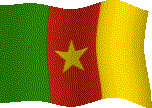All the Qsl Card requests for the Yorkshire Dales Day event (GB1YDD) have now been issued.
If you require a Qsl Card confirmation for this event (WFF- GFF-020) then please email me or apply on-line here and I will drop one in the system for you.
All the Qsl Card requests for the Yorkshire Dales Day event (GB1YDD) have now been issued.
If you require a Qsl Card confirmation for this event (WFF- GFF-020) then please email me or apply on-line here and I will drop one in the system for you.
Dxpedition team now Qrv on Sable Island (IOTA NA-063).
Managed to work them on 17m this lunch time with a very good signal.
The contact not only gave me a precious all time new DXCC, but also my 500th IOTA reference!
Many thanks Wayne & good luck with the trip!
Earlier today, International Space Station (ISS) transited the Sun and it was visible over south Florida.
“The ISS paid a visit to the Winter Star Party in the Florida Keys,” says Allan Friedman, a resident of New York.
“A fine transit of the ISS across the sun was scheduled for 2:39 p.m. not far from this annual gathering of astronomers.
I was scheduled to give a talk on astrophotography ending at 1:30 p.m. As soon as it was done, I made a mad dash to set up and record the pass.
We barely made it in time to catch the ISS silhouetted against the limb of the sun.
Total elapsed time of the transit from our location at Knights Key Resort and Marina – one fifth of a second. A blink of an eye and an 1800 mile drive to see it!”
There were two good passes of the ISS in the UK last night. Sadly though, both the Space Shuttle Discovery and the ISS had ‘merged’ by the time it go to us so no viewing of Discovery as a seperate unit :-(. Nevertheless, it was awesome as always (IMHO)!.
A solar wind stream hit Earth’s magnetic field on March 1st, sparking a day-long geomagnetic storm and bright auroras around the Arctic Circle.
NASA space physicist James Spann photographed the display from Poker Flat, Alaska.
The storm is subsiding now, but it could start up again in response to ongoing high-speed solar wind.
Congratulations to the three Operators from the Strictly Contest Group for their achievements in National Field Day 2010.
They managed to become 160M Band leaders in the Open Section of the Event.
Well done guys!
It was a good and successful event for GBØANT with 3073 Qso’s logged over the 7 day event.
All Qso’s now confirmed on LOTW
NanoSail-D2 is a small satellite which will be used by NASA’s Marshall Space Flight Centre and Ames Research Centre to study the deployment of a solar sail in space. It is a three-unit Cube-Sat measuring 30 by 10 by 10 centimetres (12 × 3.9 × 3.9 inches), with a mass of 4 kilograms (8.8 lb). Its solar sail has an area of 10 square metres (110 sq ft), and was deployed in around five seconds. It passed right through Orion and what a great catch, even if i did miss the ISS through the excitement hi! You too can track its progress by clicking the image above, Good Luck!
The quiet didn’t last long!!
Earth-orbiting satellites detected an M3-class solar flare at 0735 UTC on Feb. 24th. The source was an active region located just behind the sun’s eastern limb. The eruption produced strong radio emissions, a coronal mass ejection (not Earth directed), and this spectacular picture taken by NASA’s Solar Dynamics Observatory:
Well the TJ9PF operation from Cameroon has now ended. This message from the team leader about their efforts;
”As the best things , the TJ9PF 2011 aventure is ending. The last 24 hours of traffic are on. After the last QSO around 1300 UTC, TJ9PF will be off. The time of the memories and the assessment will start.
The last upload of the log happened yesterday evening at 1900. The last QSO has been logged at 1200z. The first target of 80000 QSO wasn’t reached but despite all of the problems they suffered with electricity, static and propagation, they finally stopped on about 67000 QSO’s.
One of the most important things is they have once again broken the RTTY QSO’s number world record in a Dxpédition. They keep the Digital Dxpedition QSO World record with more than 17000 q’s on RTTY. They kept the previous record since they broke it for the first time in 2009 during TS7C dxpedition. Despite the working conditions, the electricity blackouts etc, the 160m band shows 1747 QSO CW and 44 QSO SSB.
Tks to all of you who are still doing all that’s possible to make TJ9PF 2011, a success.”
If statistics have any interest for you, have a look at how you and your friends did by clicking the flag. 